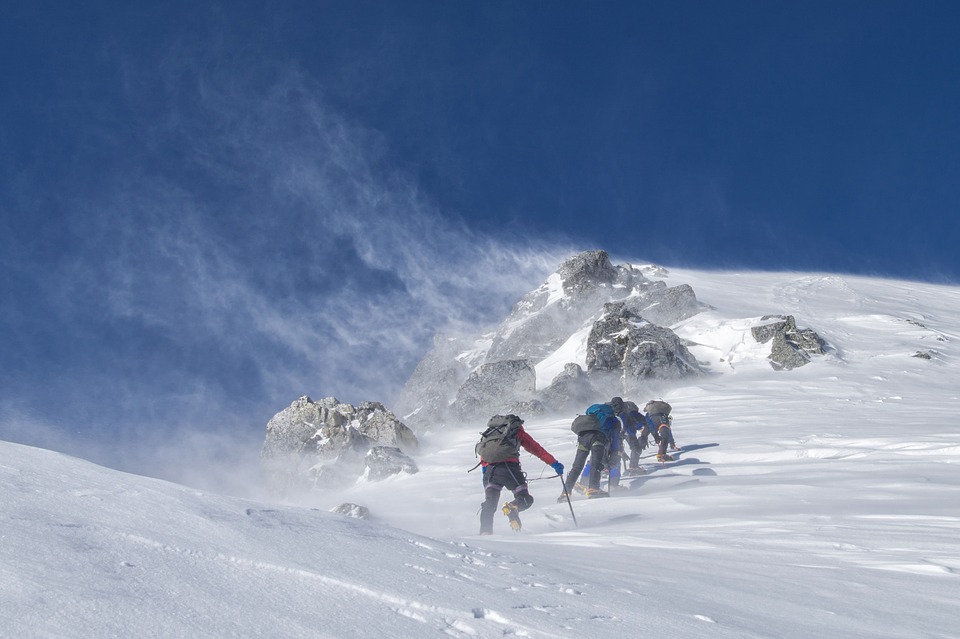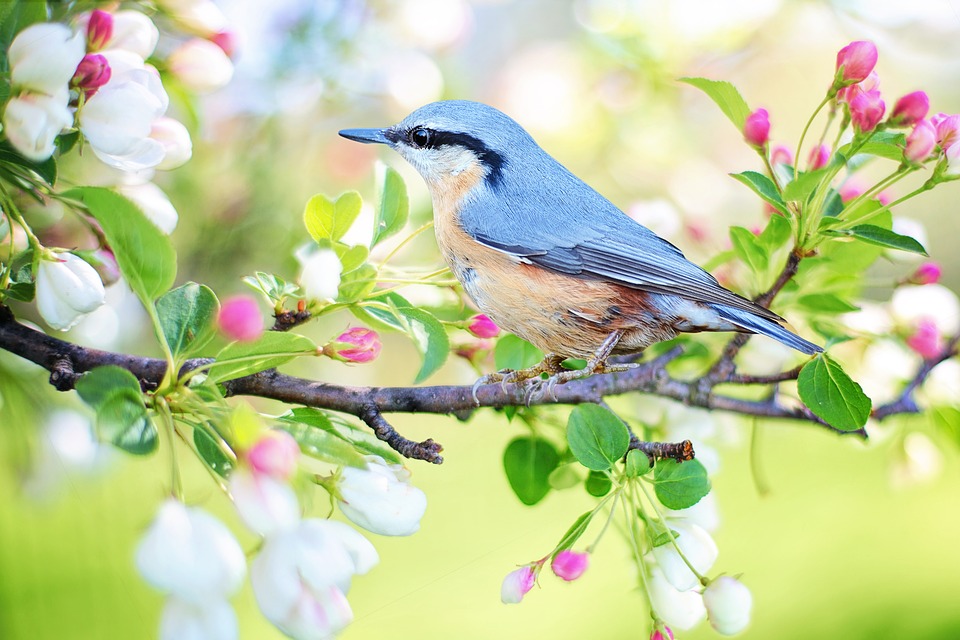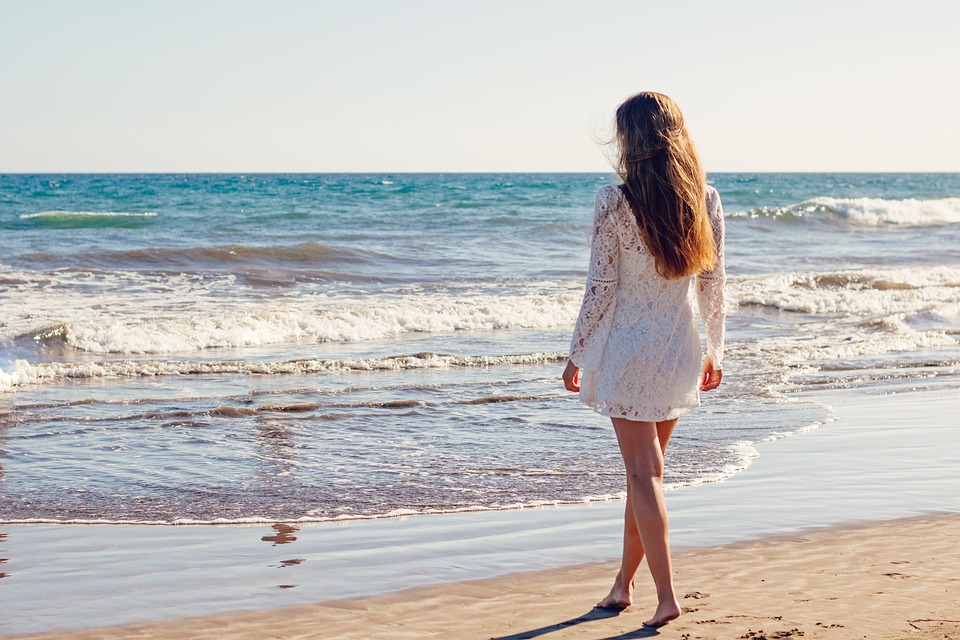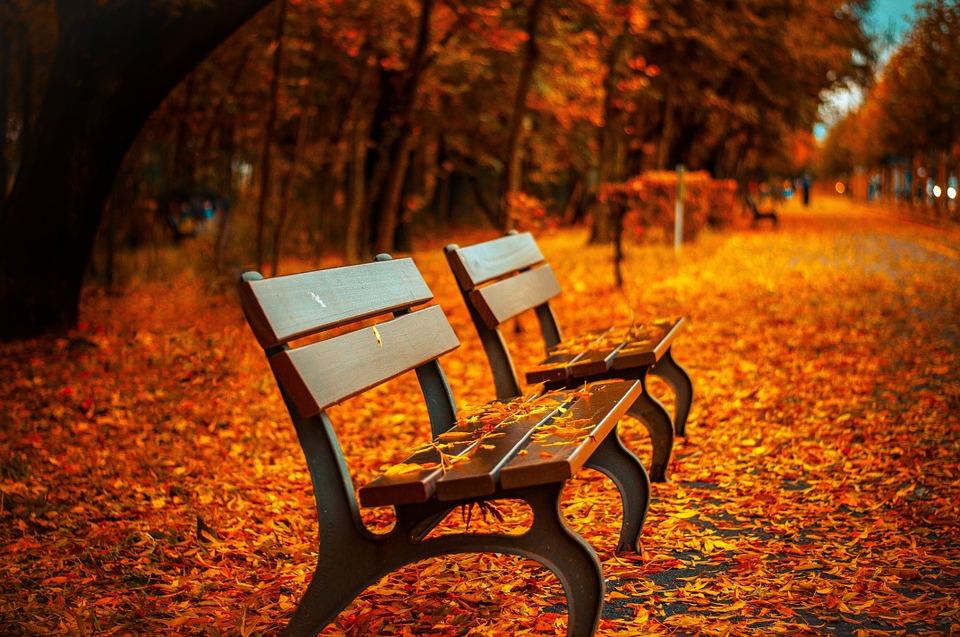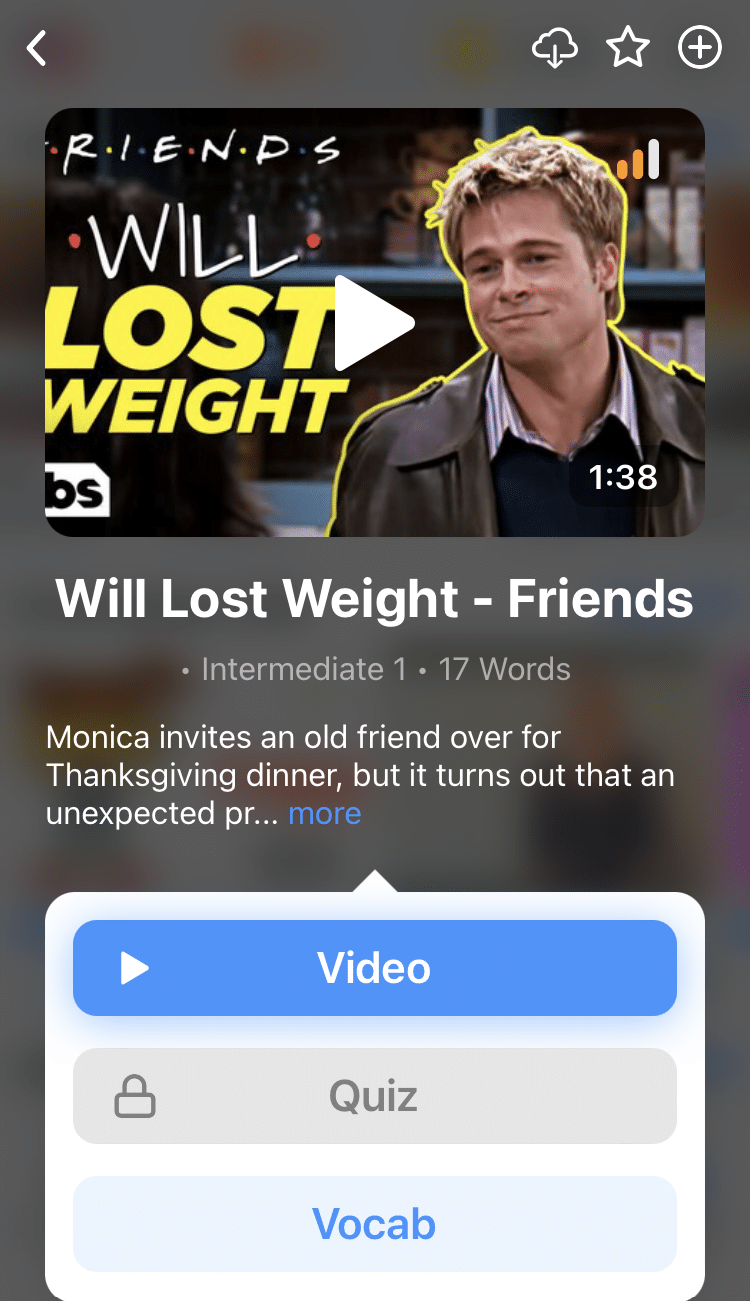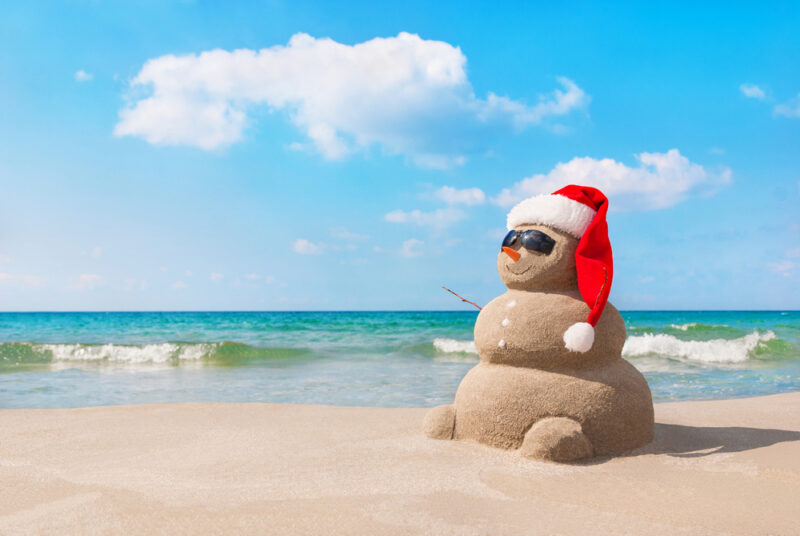
Seasons in English: 79+ Words and Phrases
What’s your favorite time of year?
Depending on where you are in the world, many English-speaking countries have completely different climates and weather.
However, we can say that there are four distinct seasons in English. They are spring, summer, autumn (or fall) and winter.
The timings of these seasons change depending on location. For example, summer in the UK happens during winter in South Africa. This is because the UK is in the Northern Hemisphere (northern half) of the planet while South Africa is in the Southern Hemisphere (southern half).
Let’s learn how to speak about the four seasons in English, so you can answer that question with confidence!
Contents
- What is a Season?
- How to Say the Seasons in English
- Talking About Winter in English
- How to Talk About Spring in English
- How to Talk About Summer in English
- How to Talk About Fall / Autumn in English
- How to Practice Speaking About Seasons in English
- And One More Thing...
Download: This blog post is available as a convenient and portable PDF that you can take anywhere. Click here to get a copy. (Download)
What is a Season?
A season is a time period in the year characterized by certain weather conditions. These conditions can change depending on what country you’re in, but the descriptions of these seasons are generally the same.
Each season has three months in it, and all the seasons and the months create a year.
Let’s take a look at the names of the seasons and how to talk about them.
How to Say the Seasons in English
Here are the seasons in the order they occur during the year:
Talking about seasons in English
- To talk about what happens in each season, you can add the preposition in or during before the season name. For example, you might say something like “it snows in the winter” or “during the summer, my family likes to go swimming in a lake.”
- Sometimes, the word time is added to the end of the season. For example, you can say “in the springtime” or “in the summertime” or “in the wintertime.” This doesn’t work for fall or autumn, however.
- Fall and autumn are two words used for the same season. Fall is generally used in American English whereas autumn is used more frequently in other English-speaking countries such as the UK.
- The names of the seasons aren’t capitalized in English. This is in contrast to (different from) the months of the year or the days of the week, which must be capitalized in writing.
Now that we know what the four seasons are in English and how to talk about them, it’s time to learn the common vocabulary that goes with each season including weather, season-appropriate clothing and specific activities.
These descriptions will focus on the seasons as they’re experienced in countries in the Northern Hemisphere such as the United States, Canada and the United Kingdom. Keep in mind that the timings of the seasons are reversed in Southern Hemisphere, and the weather conditions in each season may be very different in these countries.
Talking About Winter in English
Winter happens during January, February and March in the Northern Hemisphere. It’s known for cold weather and for being the time of year when people spend a lot of time indoors. Winter in the Northern Hemisphere also means that the night is longer, and in some places such as Toronto, Canada, there may only be nine hours of daylight.
Here’s some common vocabulary used during winter:
Snow
Snow is frozen rainwater that becomes white and fluffy and then falls to the ground. If it’s cold enough, the snow can accumulate (pile up) and stay for the entire duration of the winter.
Snowman
A snowman is a man made out of snow. Snowmen are generally created by rolling three large balls of snow and then piling one on top of the other. To create the snowman’s face, people often use stones to make eyes and a mouth and a carrot to make a nose. Tree branches are used for the snowman’s arms.
Snowball
A snowball is a small sphere of snow. They’re generally thrown at other people during a snowball fight . Be careful, though! Snowballs may have ice in them and hurt people if you throw them at someone’s face.
Blizzard
A blizzard is when a lot of snow falls from the sky and there’s a lot of wind. These can be particularly dangerous for people driving since it may be hard to see. Blizzards can last days, and sometimes a lot of snow accumulates, leading to problems such as power outages (the electricity going out).
Ice
Ice is frozen water. Water gathers on surfaces and freezes. This can make roads very slippery, and it can damage things such as tree branches and power lines for electricity.
Icicle
An icicle is when ice forms on something that’s off the ground (such as a tree branch) and water freezes as it drips downward. Icicles look like down-pointing carrots. When they break and fall, they can be dangerous as they might hit someone or break something like a car window.
Cold
Cold is when heat is lacking in the air. When it’s cold, it’s generally required that people wear warm clothing or stay indoors. When outside, people may shiver (shake) or, in extreme cold, get frostbite (body parts freezing and dying).
Freezing
This is another word for extreme cold . When it’s freezing, things such as water or other liquids may freeze (solidify).
Skates / Skating
Skating is a popular activity during winter. It takes place on frozen water, and people strap skates (shoes with a metal blade) to their feet that allow them to glide along the frozen water. Skates and skating are the main activity in the sport of hockey.
Ski / Skiing
Skiing is also another popular sport during winter. People strap skis (long, narrow pieces of flexible material) to their feet and hold on to ski poles (long poles that hold people up and move them forward). Skiing can be done by gliding down a mountain or moving along level ground.
Snowboard / Snowboarding
Another popular sport during winter is snowboarding. A wide, long board is attached to both feet, and people glide down a mountain or hill to do snowboarding.
Hat
A hat is a piece of clothing that keeps the head warm. The material is made in the shape of the head, and it can be made of thin or thick fabric.
Gloves / Mitts
Gloves or mitts are pieces of clothing that keep the hands warm. Gloves allow you to use your fingers individually whereas mitts only allow for movement of the whole hand.
Coat / Jacket
A coat or a jacket is a piece of clothing that keeps the upper body such as the chest, stomach and back warm. They can be made out of synthetic fibers (fake fabric) or fur (animal hair). In many places, a coat and a jacket are the same thing, but sometimes a coat is meant to be heavier and longer than a jacket.
Scarf
A scarf is a piece of clothing that wraps around the neck to keep it warm. It’s made out of long, soft fabric.
Boots
Boots are shoes that keep the feet warm. They’re thicker than shoes, and they allow people to walk through snow without their feet getting wet.
Shovel
A shovel is a tool that’s often used by people to clear their driveways or sidewalks of snow during the winter. There’s a handle at the top for holding, a long pole of wood or plastic and then a wide piece of plastic at the bottom for scooping the snow.
Christmas
Christmas is a holiday that takes place during winter. It happens on December 25 every year, and for Christian people, it marks the birth of Jesus Christ. For some, many spend the day going to church and visiting family.
It’s traditional to receive gifts under a Christmas tree (a pine tree) on Christmas morning and to eat a turkey meal for dinner. Santa Claus is also said to bring gifts to children on Christmas.
How to Talk About Spring in English
Spring happens during April, May and June in the Northern Hemisphere. It’s known for the weather transitioning from cold to hot and for being the time of year when plants, trees and flowers start to grow again. Animals such as birds fly back to their regular climate, and other animals wake up from their hibernation (sleep).
Here are some common vocabulary words used during spring:
Flower
A flower is a type of plant that grows in the springtime. It starts off as a green stem (plant stalk) and then blooms (grows a flower). These flowers can be many different colors, and they spread pollen (flower dust) through the air to grow new flowers in other locations.
Blossom / Bloom
These two words are verbs that describe what flowers do. When a flower blossoms or blooms, they grow flowers.
Tulip
A tulip is a type of flower that commonly grows in spring. It has a single flower at the top of the plant with large petals. Tulips are often pink, yellow or purple.
Tree
A tree is a large plant with a wooden trunk. Branches grow out from the trunk, and there are leaves on these branches. There are two types of trees: deciduous trees that lose their leaves every fall and coniferous that have needle-like leaves on their branches all year round.
Rabbit / Bunny
A rabbit or a bunny is an animal that’s common around the spring. It’s small and furry, and it hops around fields, living in holes in the ground. Rabbits are often symbols of spring because they represent new life and nature waking up after winter.
Butterfly
A butterfly is an insect. It grows from a caterpillar that has made a chrysalis (a small case) and then comes out once they have become a butterfly. Butterflies have wings that have beautiful colors and patterns.
Rain
This is the water that falls from clouds in the sky. Rain is very common in the spring.
Umbrella
An umbrella is an object used to keep rain off of people. It’s made up of a handle and a thin metal pole. When opened, the fabric of the umbrella creates an upside-down shell that protects its holder from the rain.
Rainbow
A rainbow is a beam of multi-colored light in the sky that commonly occurs after the rain. Traditionally, a rainbow can be seen arching over a large part of the sky, and it’s made up of six colors: red, orange, yellow, green, blue, indigo and violet.
Raincoat
Like umbrellas, a raincoat is worn to keep rain off people. It’s made of water repellent material (made to not absorb water), and it often has a hood.
Bird
A bird is an animal that flies. It has wings and lives in a nest in a tree. Birds return from warm climates during the spring, and many birds lay eggs that hatch into chicks (baby birds).
Bee
A bee is an insect that spreads pollen from flower to flower during spring. They live in hives (large, spiral structures) in trees, and they have fuzzy stingers.
Cloud / Cloudy
A cloud is a white fluffy mass in the sky. When the cloud becomes dark, it means that it’s filled with water and it may rain soon. When there are lots of clouds in the sky, we say that it’s cloudy.
Cool
When we talk about springtime, we say that the temperature is cool. Cool means that it’s not cold, but it’s definitely not warm. It’s generally defined as being between 45 and 60 degrees Fahrenheit (seven to 15 degrees Celsius).
Easter
Easter is a holiday that happens in spring. Its date changes, but it generally happens in late March or April. For religious Christian people, Easter marks the death and resurrection (return to life) of Jesus Christ. This holiday is known for celebrations with family, eating chocolate, flowers and visits from the Easter Bunny.
How to Talk About Summer in English
Summer happens during July, August and September in the Northern Hemisphere. Summer is known for hot weather and for being the time of year many people take vacation (take a break) from work or school. Because of the nice weather, a lot of people travel, have parties and spend lots of time outside during the summer.
Here are some common terms used during summer:
Sun
The sun is the giant circular object in the sky that makes Earth warm. The sun is generally its warmest during the summertime. The sun is actually a star that the Earth orbits (circles).
Hot
Hot is when there’s lots of heat in the air. When it’s hot, people tend to wear light clothing such as shorts and t-shirts and go outside. When outside, people may sweat (have wetness on their skin) or, in extreme heat, they may get dehydrated (not have enough water) and faint.
Heat
Heat is the sensation of being hot. This happens quite often during the summer, even when it’s cloudy or raining.
Heatwave
A heatwave is when particularly hot weather stays in a location for a long time. This can lead to long-term effects such as health problems and too much electricity use for air conditioners (machines that cool buildings and homes).
Storm
A storm is a weather event that’s chaotic (wild and unpredictable) and can be dangerous. It’s generally made up of heavy rain, wind, thunder and lightning. Storms are common when it’s very hot.
Tornado
A tornado is an extreme weather event that can be very dangerous. Tornadoes sometimes happen during storms. A tornado is a wind vortex that comes from the sky. Things close to the tornado such as houses, buildings and cars can be blown around and destroyed.
Beach
A beach is a place where the land meets a body of water such as a lake or an ocean. Beaches generally have sand where people can walk and lie down. It’s common for people to go to beaches in the summer so that they can go into the water and cool off.
Sunscreen
Sunscreen is a cream that people put on their skin to protect it from getting a sunburn (redness on the skin after being in the sun) that can be painful and lead to skin cancer.
Pool
A pool is a body of water that’s been created by humans. It can be in or above the ground. Many have pools for a place to cool off during the summer.
Swim
Swim is a verb that means “moving through water.” Many people swim in pools or at the beach during the summer to cool off and be physically active.
Shorts
Shorts are clothing worn on the legs. As the name suggests, they’re shorter than pants, typically going to the knees.
Sandals / Flip flops
Sandals are a type of shoe worn on the feet. Rather than being completely enclosed in fabric, sandals are open and allow the feet to be almost completely out in the air.
Flip flops are similar to sandals, but they have less fabric. Unlike sandals, flip flops only have one strap that holds the shoe in place, generally over or between the toes. They’re known for their signature flip, flop sound that they create when walking.
T-shirt
A t-shirt is a type of shirt worn on the torso. They generally have shortened sleeves that only go to the elbows. They’re named after looking like the letter T.
Swimsuit
A swimsuit is a piece of clothing that people wear in the pool or at the beach. For men, a swimsuit is just a pair of shorts. For women, swimsuits can be one-piece (a single piece that covers the whole torso) or two-piece (a shirt that covers the chest and a bottom piece).
Sunglasses
Sunglasses are an accessory worn over the eyes. They’re worn during the summer to keep the sun out of people’s eyes.
Watermelon
Watermelon is a common fruit eaten during the summer. It’s a large, round fruit with a watery, soft interior. It’s green on the outside and red on the inside with black seeds. It’s the perfect summer treat because it’s juicy and is perfect for cooling off.
Ice cream / Popsicle
Another popular summer treat is ice cream. It’s made of frozen milk and comes in many flavors such as chocolate and vanilla. A popsicle is similar to ice cream, but instead of being made of milk, popsicles are generally made of frozen fruit juices.
In other English-speaking countries, you may hear slight variations of these terms. For example, in British English, a popsicle is commonly known as an ice lolly , while in Australia it’s called an icy pole or ice block .
One of the best ways to learn these English language variations and how to use this vocabulary is by consuming English content to see how the language is used in context by native speakers.
You could try watching TV shows or movies in English and see how the characters use these phrases in their everyday conversations. You can also use a video-based language learning program like FluentU.
FluentU takes authentic videos—like music videos, movie trailers, news and inspiring talks—and turns them into personalized language learning lessons.
You can try FluentU for free for 2 weeks. Check out the website or download the iOS app or Android app.
P.S. Click here to take advantage of our current sale! (Expires at the end of this month.)
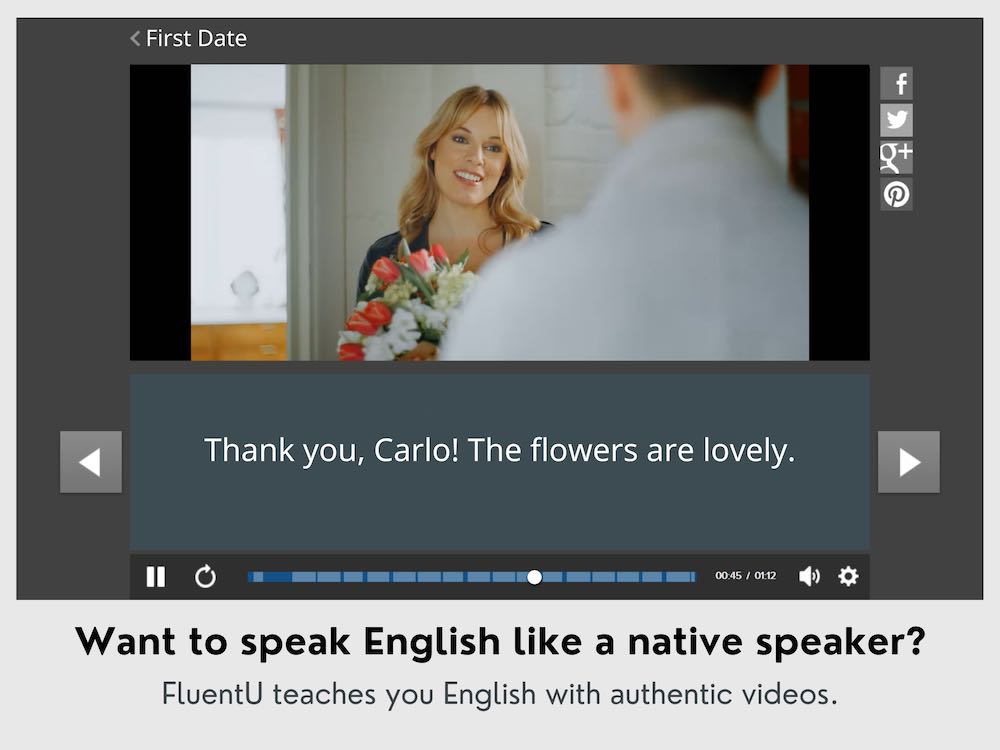
By immersing yourself in native media, you’ll start to pick up on how these terms are used by native speakers and begin to incorporate them into your own English vocabulary!
How to Talk About Fall / Autumn in English
Fall or Autumn happens during October, November and December in the Northern Hemisphere. It’s known for the weather becoming cooler and for being the time of year when the leaves on the trees change color and fall off. Animals such as birds fly to warmer places to be away before the start of winter, and other animals begin to hibernate (sleep) to keep warm.
Here are some common words and phrases used during fall or autumn:
Leaf
Perhaps the most common sign of fall is when the leaves on the trees change colors. A leaf is the thin green piece at the end of a branch on a tree. There are often many of these, and they change colors to red, orange and yellow in fall before falling off the tree for winter.
Return to school
In many parts of the Northern Hemisphere, it’s common for students to have a break during the warmer summer months of June, July and August. In late August or September, students go back to school. This is generally called the return to school, or back to school .
Harvest
After a long growing season during the summer, the fall starts with a harvest where farmers pick all the fruits and vegetables they’ve grown. Many of these fruits and vegetables include apples, corn, carrots and potatoes.
Pumpkin
A pumpkin is a fruit that’s picked during fall. It’s circular, large and orange. Pumpkins are often used as decorations for holidays that happen in fall.
Turkey
A turkey is a large animal that is eaten during holidays in the fall. It’s a bird that is larger than a chicken, and it has a big fan of tail feathers and a wattle (dangling skin from its throat).
Wind
Wind is the movement of air on the Earth’s surface. It’s particularly strong during the season of fall.
Fog
Fog is moisture on the Earth’s surface instead of in the sky. It can make it hard to see in front of you, and it can be dangerous to drive in if it’s particularly thick.
Rake
A rake is a tool used to gather and clean up leaves after they have fallen from trees. They’re made of a long pole, often wooden or plastic, as well as a metal or plastic piece at the end that fans out and looks like a large fork. This part is used to scrape along the ground and pull up loose leaves.
Sweater
A sweater is a piece of clothing that’s made out of heavy fabric. It generally has long sleeves and a hood. It’s used to keep warm during the fall, but it isn’t as warm as a coat or jacket.
Windbreaker
A windbreaker is a thin coat that’s worn when it’s windy. It’s thought that a windbreaker cuts the wind so it doesn’t make the wearer too cold.
Apple pie
Apple pie is a dessert eaten during the fall. It’s made of apples and cinnamon. It’s very sweet, and it’s sometimes served with whipped cream and ice cream.
Corn
Corn is a vegetable that’s commonly harvested and eaten during fall. It’s long and encased in a green husk (thick leaves). When the husk is pulled away, underneath there are lots of small yellow kernels that can be cooked and eaten.
Thanksgiving
Thanksgiving is a holiday celebrated in North America. Traditionally, it was celebrated to give thanks and honor the harvest after the summertime. It’s celebrated in October in Canada and in November in the United States. Many people gather for dinner on Thanksgiving, generally eating a turkey, apple pie and corn.
Halloween
Halloween is another holiday celebrated on October 31 in North America. It’s believed to have originated in Celtic cultures in the British Isles, honoring the dead and celebrating the coming of winter. In modern times, children and adults dress up in costumes. Children often go trick or treating where they go from house to house in their neighborhoods collecting chocolate and candy.
How to Practice Speaking About Seasons in English
The best way to learn vocabulary and concepts for seasons in English is to practice!
- Start with Agendaweb, where you can practice seasons in English with a variety of games such as matching games, hangman and fill in the blanks quizzes. Agendaweb also offers weather vocabulary quizzes to help you master the weather conditions that go with each season in English.
- Next, try Learn English Feel Good’s fill in the blanks activity about weather, climate and seasons that makes you choose between two similar words. This will help you practice their meanings more precisely and know the difference between the given words.
- Learning vocabulary is best when you learn in context (in real English usage). Because of this, I suggest the British Council’s reading exercises about seasons in English.
- There are many songs in English that have lyrics about the seasons and weather. For example, “Summertime Sadness” by Lana Del Rey, a song about feeling sad during the summer, and the oldie-but-goodie “California Dreamin’” by The Mamas and the Papas, a song about winter where the singers wish they were living somewhere warmer.
Who am I kidding? With all this new English vocabulary about seasons, it’s impossible to choose your favorite one.
Whether you like the heat or the cold, turkey or pie, flowers or changing colors on the leaves, every season is awesome in its own way!
Download: This blog post is available as a convenient and portable PDF that you can take anywhere. Click here to get a copy. (Download)
And One More Thing...
If you like learning English through movies and online media, you should also check out FluentU. FluentU lets you learn English from popular talk shows, catchy music videos and funny commercials, as you can see here:
The FluentU app and website makes it really easy to watch English videos. There are captions that are interactive. That means you can tap on any word to see an image, definition, and useful examples.
For example, when you tap on the word "searching," you see this:
Learn all the vocabulary in any video with quizzes. Swipe left or right to see more examples for the word you’re learning.

FluentU helps you learn fast with useful questions and multiple examples. Learn more.
The best part? FluentU remembers the vocabulary that you’re learning. It gives you extra practice with difficult words—and reminds you when it’s time to review what you’ve learned. You have a truly personalized experience.
Start using the FluentU website on your computer or tablet or, better yet, download the FluentU app from the iTunes or Google Play store. Click here to take advantage of our current sale! (Expires at the end of this month.)


